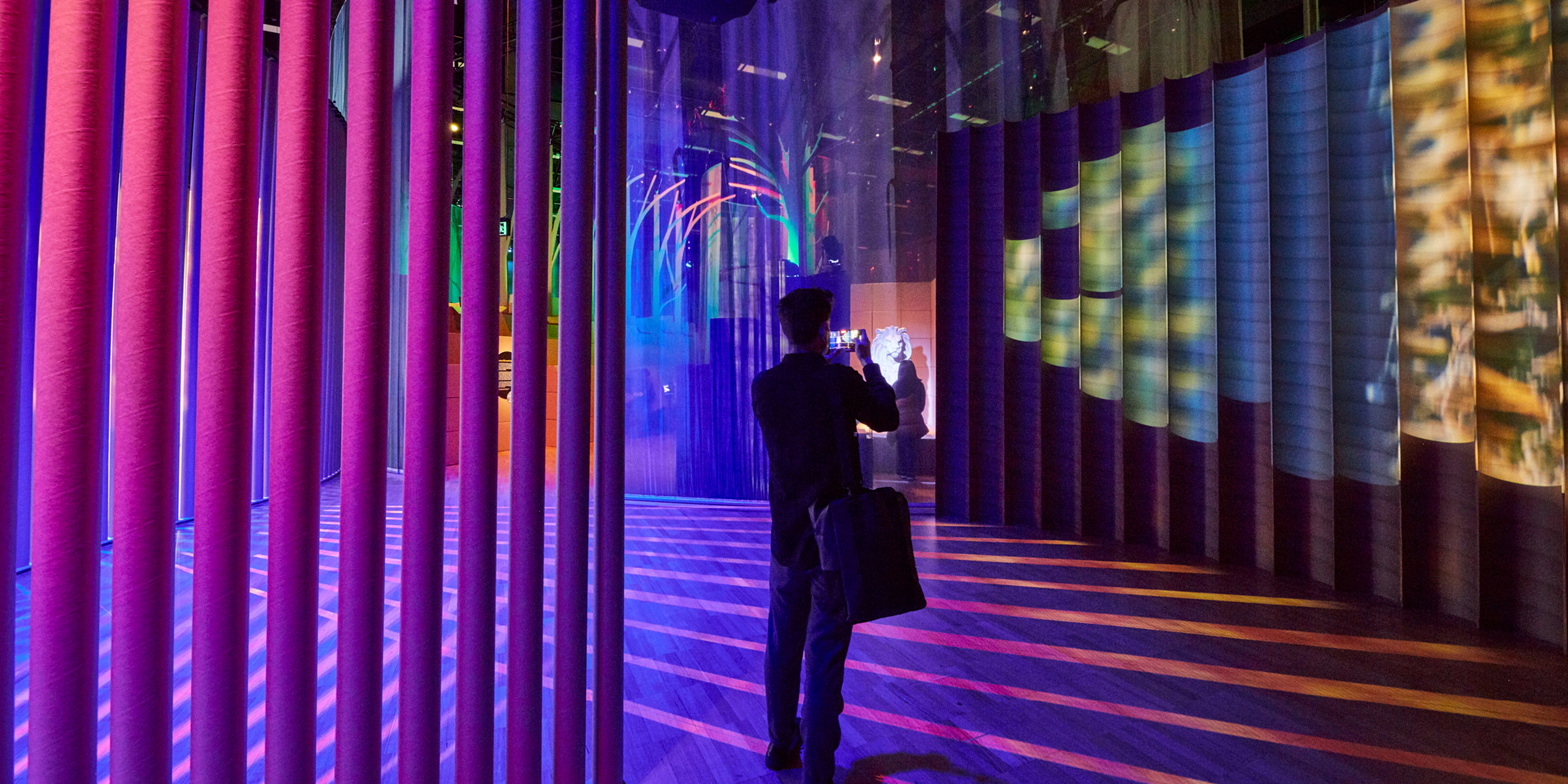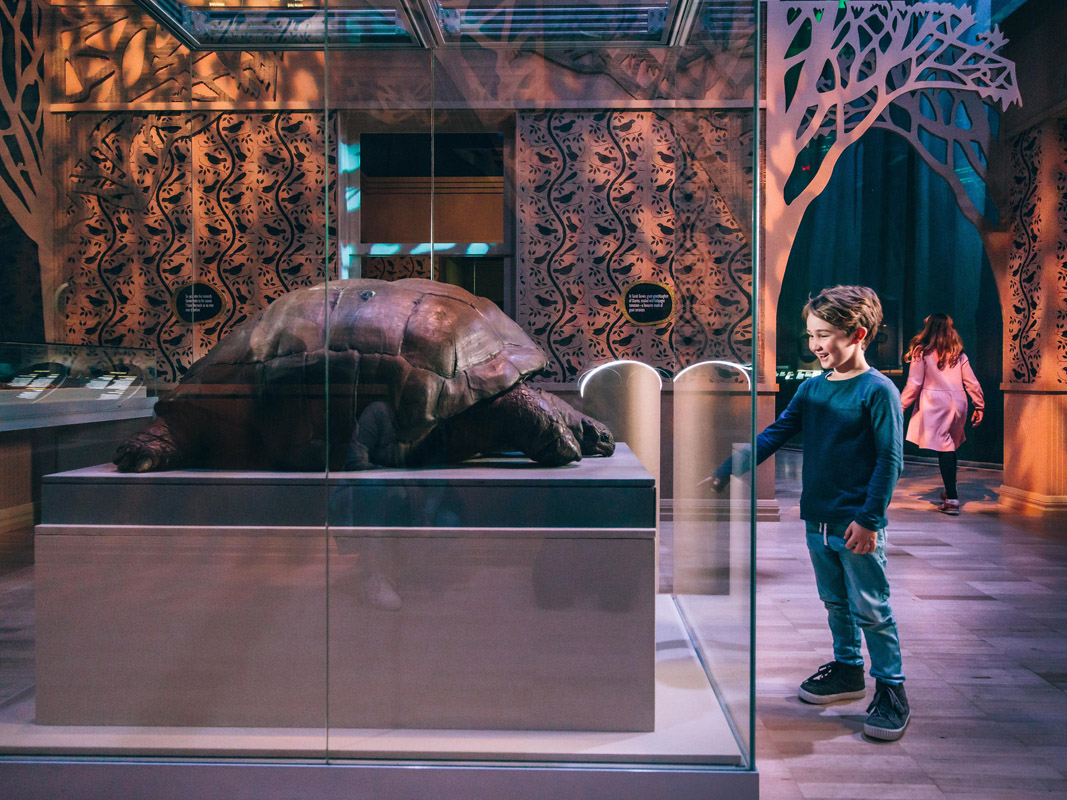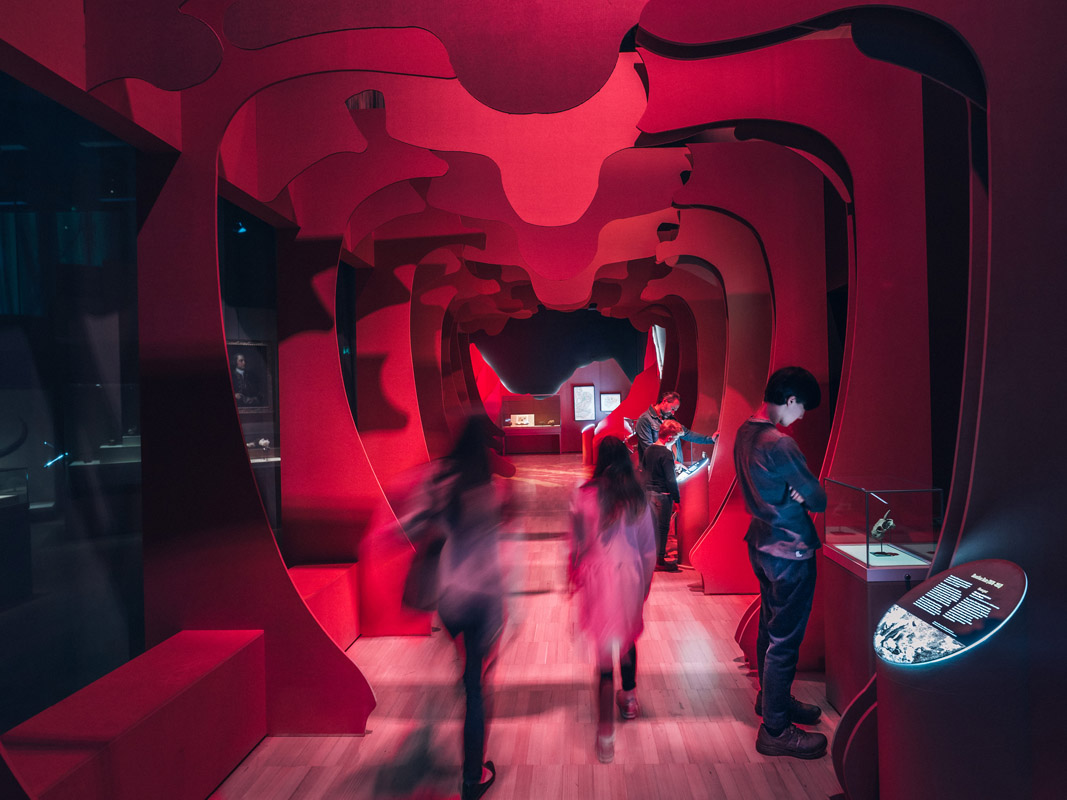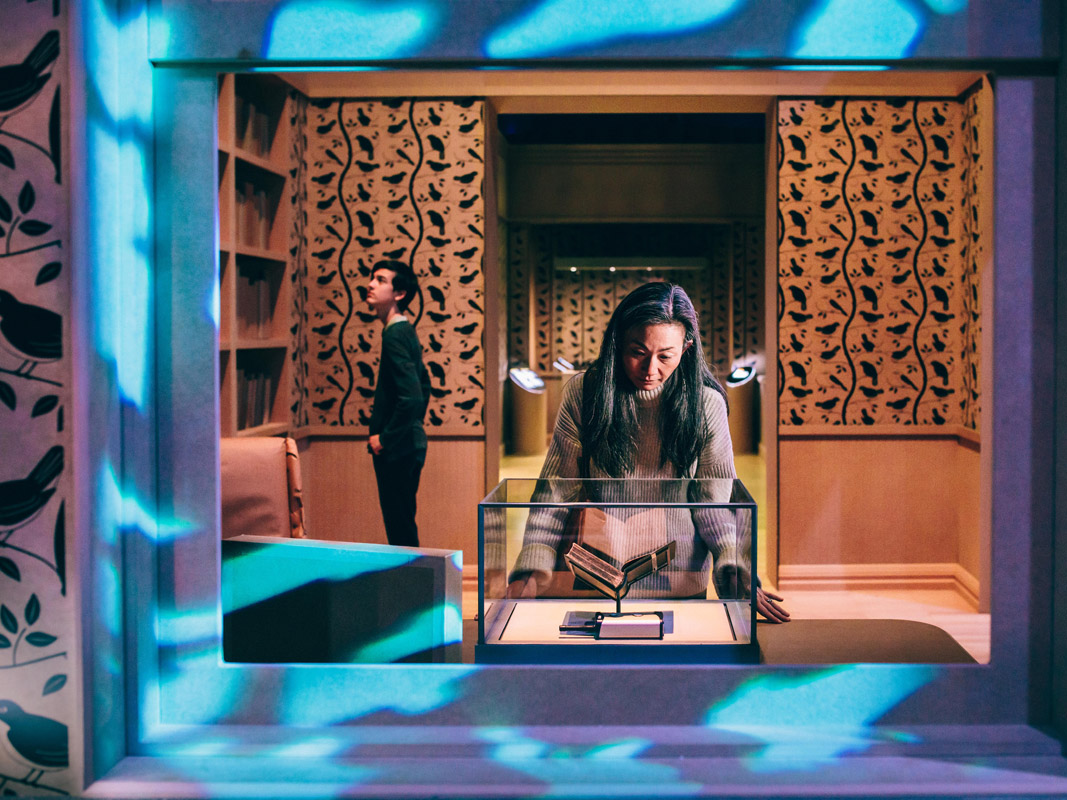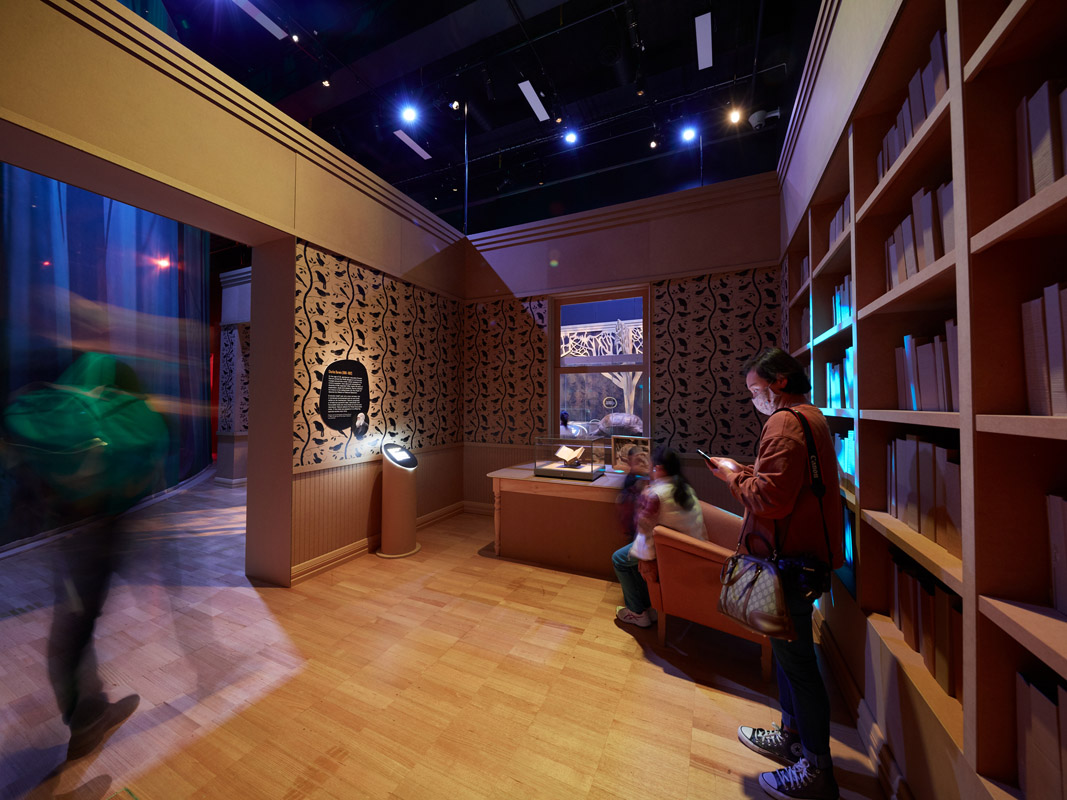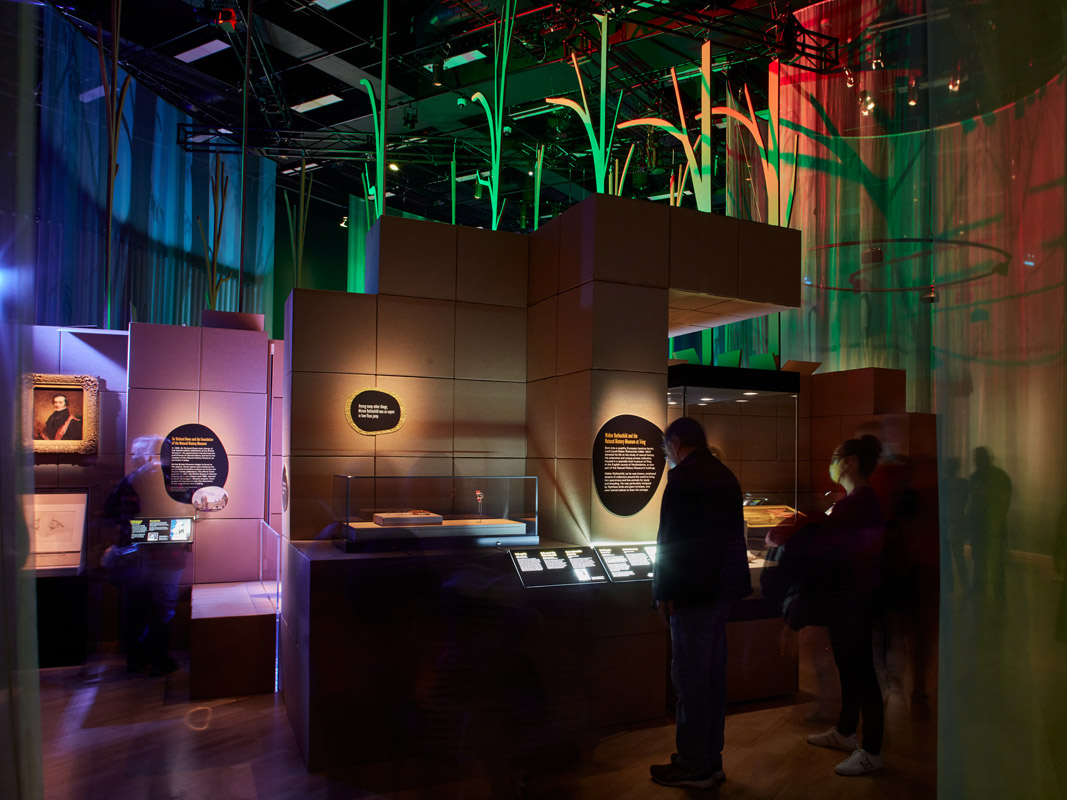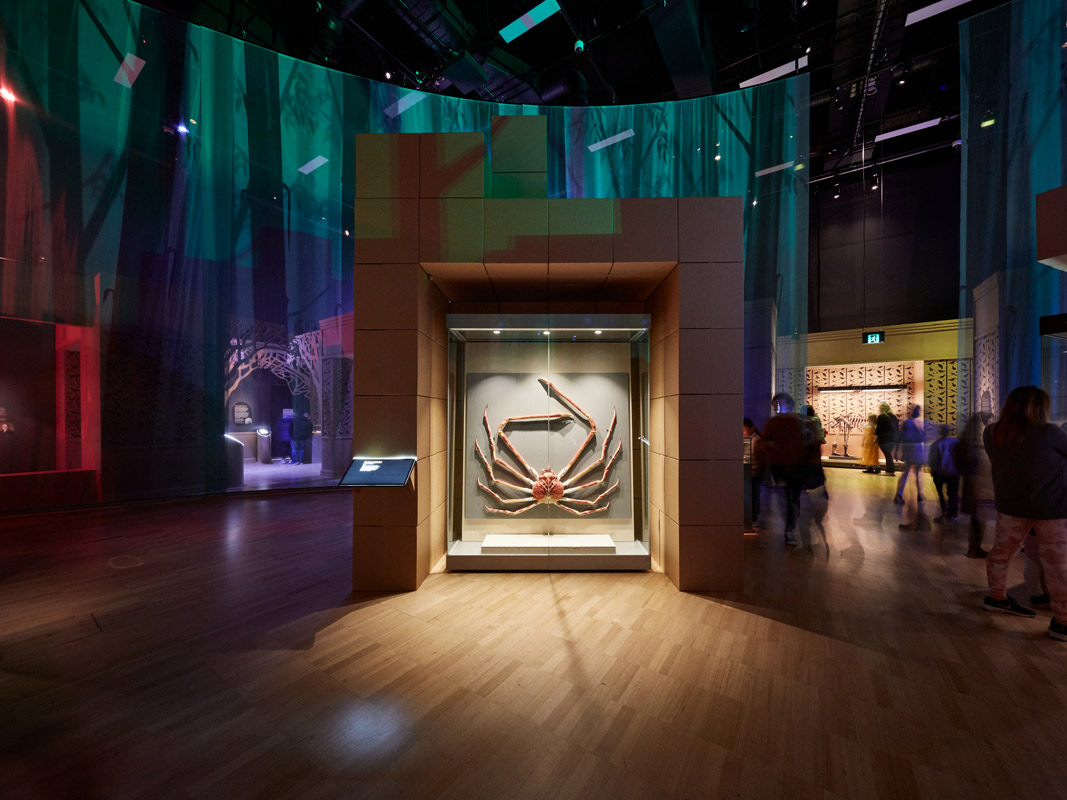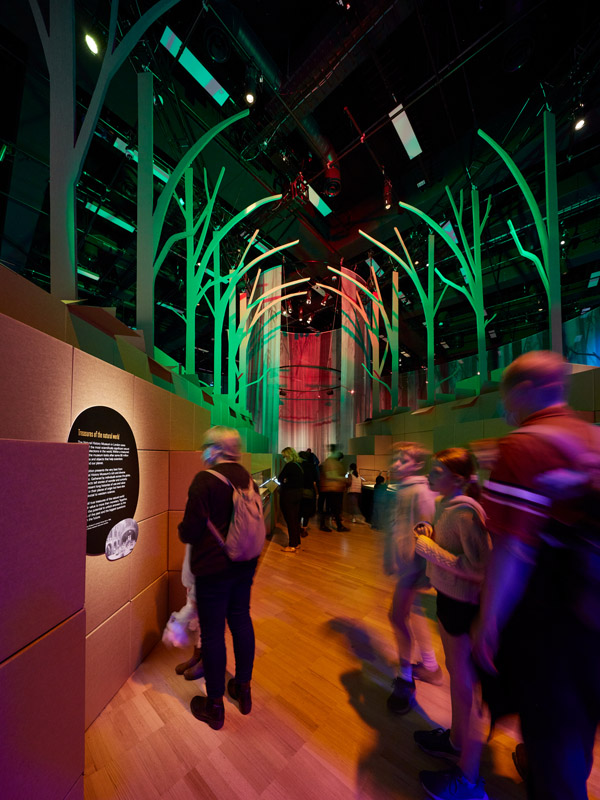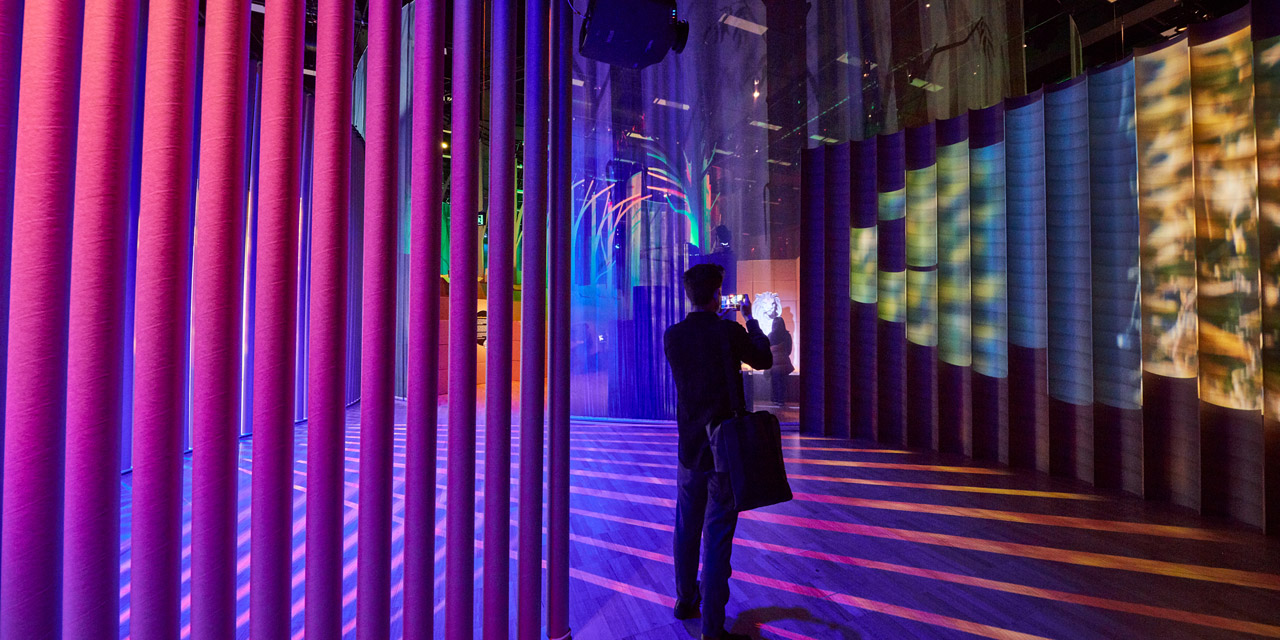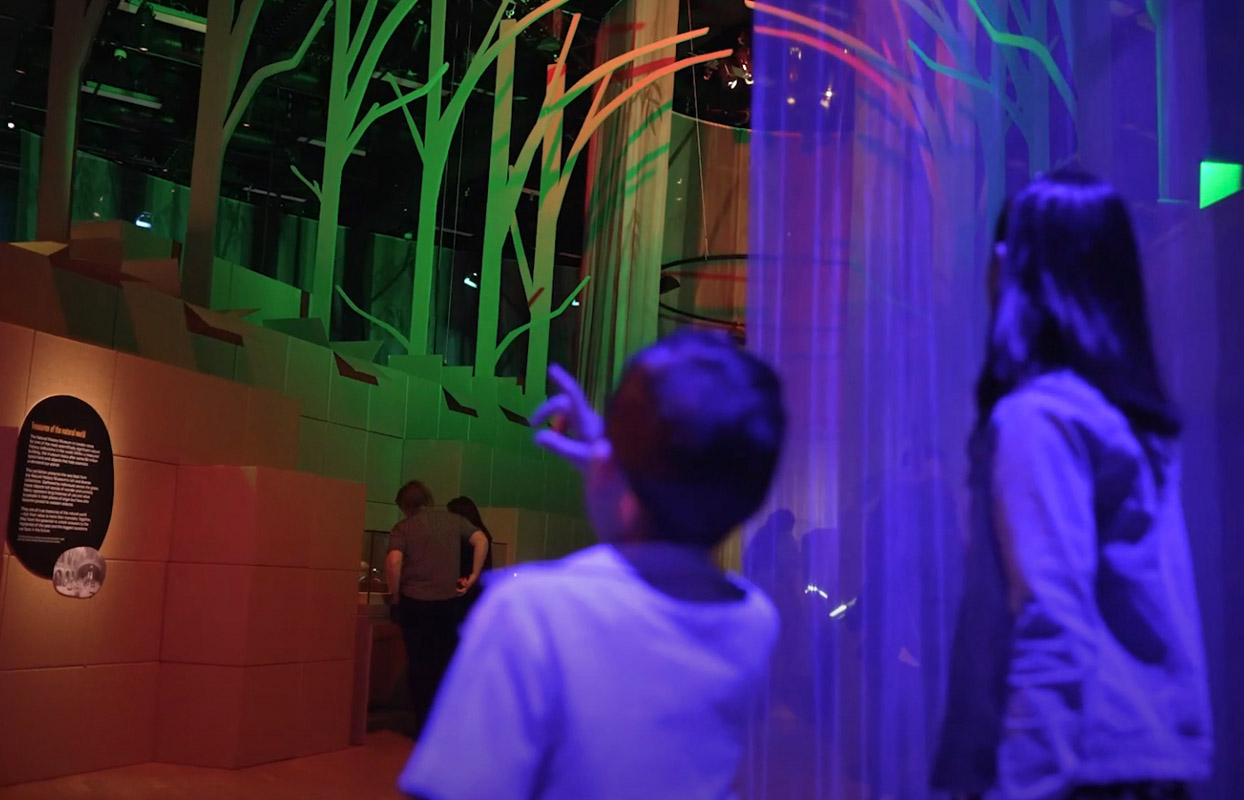For Museums Victoria to inspire audiences to care for our greatest treasure, the natural world, we chose to apply the principles of a built form derived mostly from sustainable and recyclable materials.
Cardboard was chosen as the primary material of the exhibition for its sustainability and diversity. Towers of stacked boxes were designed to echo the vast collection stores of a traditional museum while CNC-cut cardboard shapes create mountains, caves and even the 19th-century office of Charles Darwin.
The entire exhibition is wrapped in a 360-degree fabric circle of illustrated trees, echoing the feeling of being in the middle of a vast forest.
Working with Studio Peter King, the design team undertook extensive prototyping including building a full 2-D and 3-D virtual reality model of the space. This ensured that the design could be shared with local and international stakeholders throughout the concept phase.
Local set designers Synthesis and ShowWorks were chosen to fabricate the exhibition, along with Design to Print and AFI branding - all Victorian based companies.

